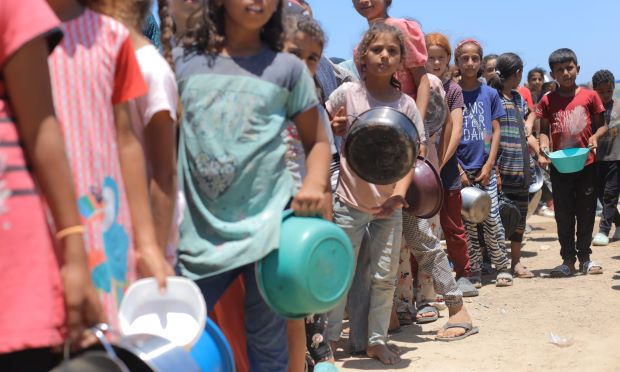Starvation already causing mass death and lasting harm in Gaza, agencies say
By Emma Graham-Harrison
JERUSALEM – Months of extreme hunger have already killed many Palestinians in Gaza and caused permanent damage to children through malnutrition, two new food security reports found, even before famine is officially declared.
The US-based famine early warning system network (FEWS NET) said it was “possible, if not likely” that famine began in northern Gaza in April. Two UN organizations said more than 1 million people are “expected to face death and starvation” by mid-July.
War complicates collecting data that would confirm famine has taken hold. But focusing only on whether Gaza had passed the moment when extreme hunger tips into an official declaration of famine risks obscuring the extremely high toll that food shortages have taken on Palestinians already, both organizations said.
“Regardless of whether or not the famine (IPC Phase 5) thresholds have been definitively reached or exceeded, people are dying of hunger-related causes across Gaza,” the FEWS NET report found. “Acute malnutrition among children is extremely high and this will result in irreversible physiological impacts.
“Widespread loss of life is still associated with outcomes ‘near’ the famine thresholds, and if this is protracted over a long period of time, then the accumulated loss of life may reach levels that are potentially as high or higher (depending on duration) compared to the loss of life that is associated with famine.”
Experts from the network, set up by the US in the 1980s to warn of impending crises, initially declared it “likely” that famine was underway in northern Gaza from April.
The term famine, when used by food and emergency aid professionals, has a strict technical definition, with three conditions that must be met in an area. The high threshold means that by the time one has been declared, many people will already have died of hunger.
Under the technical definition of famine, 20% of households must face an extreme lack of food, or essentially be starving. One-third of children must be suffering from acute malnutrition or wasting, and two adults or four children for every 10,000 people must be dying daily from hunger and its complications.
An internal FEWS review panel which would normally confirm or reject the initial findings took the unusual decision that there was not enough data to do either.
The research was blocked by “conflict and humanitarian access constraints”, the report said. Entry into Gaza is controlled by Israeli authorities, movements require military permission, roads are damaged by rubble, fuel is in short supply and power and communications networks barely function.
So the final report takes into account “available evidence and known information gaps”, and declares it “possible, if not likely, that all three IPC thresholds for famine (food consumption, acute malnutrition, and mortality) were met or surpassed in northern Gaza in April”.
The UN’s departing aid chief warned that little was being done to avert deepening catastrophe. “In Gaza, delivering aid has become almost impossible,” Martin Griffiths said in a post on X.
“We are nowhere near where we need to be. We need all border crossings open. We need safe and unimpeded access. We need to prioritize humanitarian aid.”
The World Food Program and the Food and Agriculture Organization, in their Hunger Hotspots report on global food insecurity, also warned of the toll hunger is taking, even without a declaration of famine.
“In the absence of a cessation of hostilities and increased access, the impact on mortality and the lives of the Palestinians now, and in future generations, will increase markedly with every day, even if famine is avoided in the near term,” the report said.
New crossings allowing aid into northern Gaza have slightly improved access to food supplies there since May. But in the south, the crisis is deepening after an Israeli military push into Rafah choked off the main entry routes for aid; at least two child deaths from malnutrition have been reported.
Fighting appeared to have intensified in the centre of Gaza, Médicins Sans Frontières said on Wednesday (5), with al-Aqsa hospital overwhelmed by casualties after heavy Israeli airstrikes.
At least 70 dead people and more than 300 wounded were brought in for treatment, pushing the battered medical system to the point of collapse. With the Rafah crossing to Egypt closed, there are no longer medical evacuations for the most severely injured.
“The odour of blood in the hospital’s emergency room this morning was unbearable. There are people lying everywhere, on the floor, outside,” said Karin Huster, an MSF medical referent in Gaza. “Bodies were being brought in plastic bags. The situation is overwhelming.”
-theguardian.com



Comments are closed, but trackbacks and pingbacks are open.